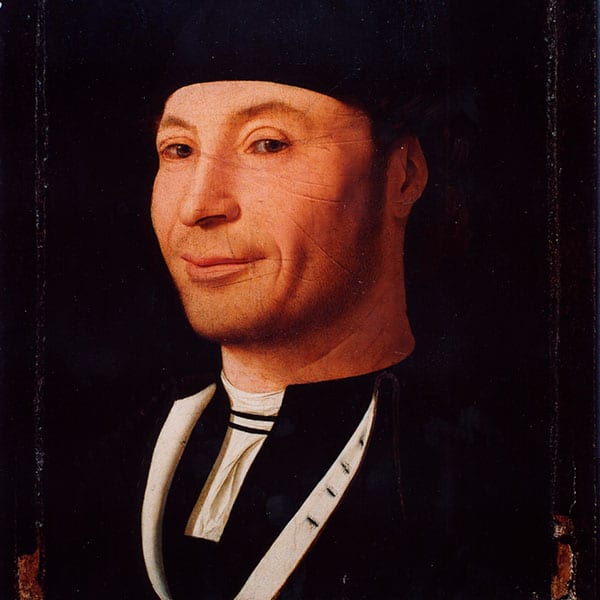
The Mandralisca Museum in Cefalù is a must-see for art lovers who are about to visit the city. It is an interdisciplinary museum, which has an average of about twenty thousand visitors a year, including archaeological pieces, a picture gallery, a collection of malacological, monetary and even furniture and other valuable objects.
Its foundations stem from the ideas and ideals of an enlightened patron of the nineteenth century, Baron Enrico Pirajno di Mandralisca (Cefalù, 1809-1864), who firmly believed in the value of education as a vehicle for the dissemination of knowledge, both in the humanities and in science, with a particular focus on young people, to fill the almost total void of educational institutions in Cefalù and its neighbouring towns.
In his will, drawn up on 26 October 1853, the baron therefore provided for the creation of a high school and an evening school (Lancasteriana Scuola Notturna), maintained thanks to the income from his own assets, which included the collection of his “cabinet” and the house that hosted them.
Thus the Fondazione Mandralisca (now Fondazione culturale Mandralisca Onlus) was born as a school foundation. The high school, housed in the baron’s residence (located in the ancient Strada Badia, now via Mandralisca), began to work only in 1890, after the death of the widow of the baron Maria Francesca Parisi, usufructuary of her husband’s property and died on 2 February 1888.
Library
The library, intended for public use by its founder, today replaces the city’s public library, which has a floor in polychrome majolica of the eighteenth century and holds about seven thousand volumes.
Of particular interest are the collection of diplomas of the archive of the Cathedral of Cefalù and two nautical charts of the seventeenth century.
Art Gallery
The Art Gallery at Mandralisca Museum in Cefalù occupies the first and second floors of the structure, without following a strictly chronological exhibition. The collections are heterogeneous (XV-XVIII century) and predominantly Sicilian. The highlight of the collection is, the “Portrait of unknown sailor” by the famous Antonello da Messina.
Furniture
Among the furnishings exhibited in the museum, you can find those belonging to Baron Mandralisca, of a typically neoclassical taste, as well as majolica dishes, a service in pottery by the Neapolitan artisan Biagio Giustiniani and a glassware service in Murano glass. The two 17th century styles, from the legacy of Cirincione and probably produced by workshops of cabinet makers in Naples, are also valuable.
The archeological collection
The main core of the collection is made up of the finds from excavations carried out personally by the baron in Cefalù itself, in the southern necropolis between the districts of “Santa Domenica” and “Pietragrossa”, in other places of Sicily and in particular, in 1864, in the necropolis of “Contrada Diana” in Lipari. It includes, besides Proto-Corinthian ceramics and red figures of local production (Magna Grecia and Sicily), the red-figure Siceliota crater on a black background called “del venditore di tonno“, dated in 370 BC.
In addition, there are four other red-figure Attic craters, attributable to the painter of the Centauromachia, a collection of lamps, Hellenistic, Roman and Christian, including one in the form of a boar’s head, a statue of the goddess Demeter from the 4th century B.C. and a lekane.
The numismatic collection
Located on the first floor, the collection includes a large collection of coins grouped by mints, regardless of their chronology, along with an extensive collection of books on the subject.
Malacology and ornithology
The collection of malacological and zoological specimens of the Mandralisca Museum are the result of the baron’s naturalistic studies. It offers an impressive collection of marine, terrestrial and freshwater shells, and lungs from the Sicilian fauna, and in particular from that of the madonite. The section on European and exotic land snails, Sicilian lakes and rivers, European, south-western US and Asian snails is rich, bearing witness to the exchanges that the baron had with researchers from all over the world. The bird collection includes about a hundred birds.
Mandralisca Museum in Cefalù: how to reach it, timetable and ticket prices
The Mandralisca Museum is located in via Mandralisca, 13, in one of the streets of the historic center of Cefalù, a few meters from the Cathedral of the Norman town.
From the railway station, to reach it on foot just go through Aldo Moro and enter Corso Ruggero, then turn left into Via Mandralisca. If you come from the Giardina promenade, from Piazza Cristoforo Colombo you must walk along Via Vittorio Emanuele and turn right into Via Mandralisca.
The Mandralisca Museum in Cefalù is open all year round and every day during the following opening hours:
- JANUARY/ DECEMBER: 9 A.M. – 7 P.M. (everyday)
- JULY/AUGUST: 9 A.M. – 11 A.M. (everyday)
Only on the holidays of Easter and Easter Monday, Christmas and New Year’s Eve, the Museum is open with the following hours: 9 a.m. – 12.30 a.m./ 3.30 p.m. – 7 p.m.
Tickets: price and discounts
The price of the ticket to visit the Mandralisca Museum in Cefalù has a cost of 6 euros per person, but in some cases it is possible to take advantage of discounts.
In particular, children aged 11 to 15 and groups of more than 10 people pay 4 euros per ticket, while school groups and children from 6 to 10 years old can access at a cost of 2 euros. Finally, the museum is free of charge for all residents of Cefalù and local school groups.
For information on the Mandralisca Museum and activities, please contact:
- Tel/fax: 0921 421547
- E-mail: fondazione.mandralisca@gmail.com
- Web Site: www.fondazionemandralisca.it

